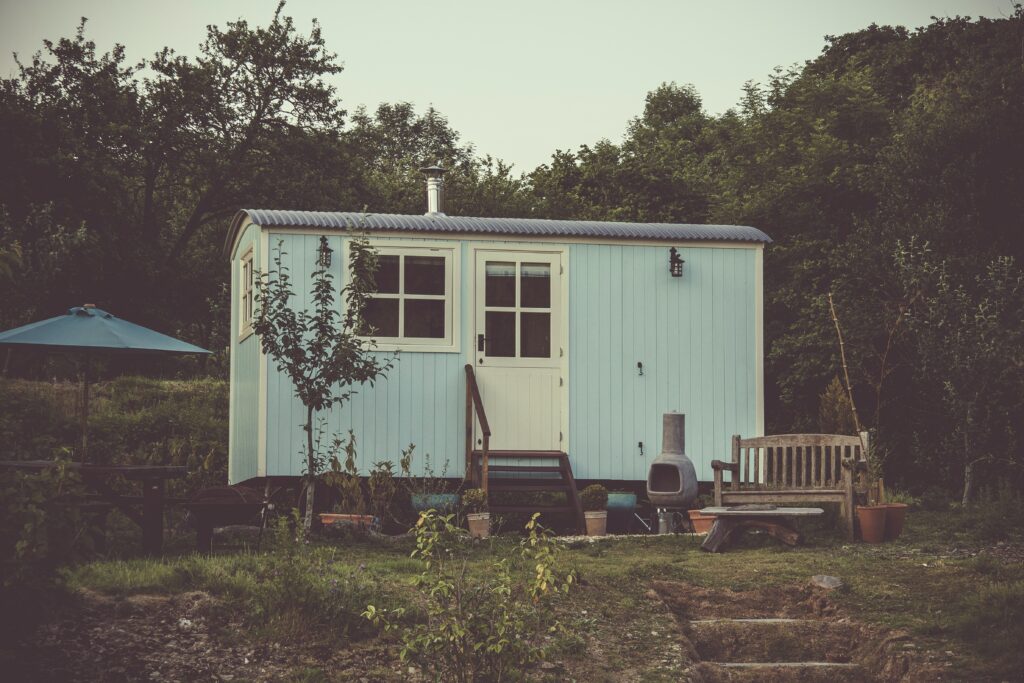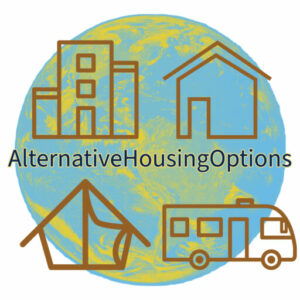With many real estate agent friends and acquaintances, I’ve heard over the past two months that it doesn’t look there will be a traditional “spring” market for real estate this year. For those unfamiliar with what a “spring” marketing means, this is the time of year when most homeowners think of selling their homes and a larger number of homes entering the market for sale.
However, I’m being told that the sales volume, while less than previous months, never had a traditional break over the winter as it did in the past. People have continued to move across all season this past year. However, what has changed is that fewer people are thought to put their house on the market because they have to pay more for the next house they purchase. This circle of low housing inventory and higher prices are predicted to continue.

Higher costs and less inventory are just a couple of reasons for the booming alternative housing market. People are starting to see that they can build an alternative housing option for less than it costs to build a traditional home. Unconventional alternative housing has its pros and cons. The pros➕ of unconventional alternative housing that they: ➕they can help people reduce their effects on the environment, ➕they allow for a lifestyle of freedom, ➕ cost less than traditional houses. The cons may be that: ➖ not all of the local housing departments appreciate alternative housing, ➖ costs can start to add up in other ways,➖ the style of living was worse than expected.
Here are the pros and cons of 3 types of unconventional alternative housing ideas
Pros and cons of tiny houses

Pros:
Cheaper to build- The average cost of a traditional home in 2022 is $392,000, and that’s to purchase pre-existing. You are looking at $263,000 to build a three-bedroom, two-bath home. While not ideal for everyone, a tiny home can be built DIY for as little as $23,000, or you can purchase a professional build for $59,884. At those prices, you can buy 2 or 3.
Transportable- One of the advantages of a tiny house is that it can be travel-friendly and allow for a permanent residence if you want to park it. A tiny house does allow the best of both worlds if you want to travel or have a smaller personal residence. You’ll want to explore your local laws about RVs and tiny homes before deciding, or this pro can quickly turn into a con.
Lower cost of living- Being tiny, you can imagine that most tiny homes would have reduced energy usage, housing costs, and environmental impact, often no mortgage. Compared to a traditional home, this is definitely an inexpensive alternative housing option. We touch on some of the other costs in the cons list.
Cons:
Transportation: You will need a vehicle with the ability to transport the home and a trailer with an adequate brake system. Most tiny homes are on wheels, but you can have them installed on a foundation with the correct building permits. The truck or vehicle might cost as much as the home itself.
Cramped living space- Tiny homes are typically between 400-500 square feet. That’s not much room if you have a family of four. You would have room for a kitchen, bathroom, living/dining area, and a loft big enough for a queen bed. If you need alone time and live with others, a tiny house may take some getting used to. If you’re still looking for a way to be environmentally friendly in your small space, consider a small composting bin for food waste. You can use it to start your own square foot garden.
Zoning- Every city has zoning laws for housing. If you want to live in town, you must comply with the laws and pay any of the associated fees. They may require your home to have certain features to comply with local building codes, such as being hooked to the utility grid, city sewer, and water. You also still need to have homeowner’s insurance if you claim this is your home.
Bathroom facilities- composting toilets are a tiny house favorite due to the lack of a sewer system like a traditional home. Zoning laws may require you to put in a traditional system, be tied to one, or get special permitting. Cleaning and sanitizing to keep the odors down can be a license.
Pros and cons of container homes

Containers have become a great way to reuse a large metal box for living instead of rusting in a junkyard as scrap. They come in two sizes, 20 feet by 8 feet which equals 160 square feet, or 40 feet by 8 feet which equals 320 square feet of living space, which doesn’t make for a large home unless you build a couple of containers together. On average, a shipping container costs $2,000–10,000 for just the container.
Pros:
Cheaper and faster to build- The average cost to build out a container home for a DIYer is $20,000, while you can purchase professional builds for $45,000. The home takes about 30% less time to build than a traditional home. If you are a handy person and would consider DIY-ing your Shipping Container Home, here is a great guide on the process from start to finish.
Durable- Considering a shipping container was initially used to transport cargo across oceans, these water-tight steel containers can withstand all weather events. The structure of the containers is strong enough to stack two or three together to make separate floors in your house. They can also be configured in not traditional ways compared to a traditional home.
Portable- You can have the container moved from place to place. This can be a pricy endeavor, but this is a possibility if you need to move and want to take your home with you.
Cons:
Small living space- like any tiny home, you have 160 to 320 square feet of living space if you have one container. You can buy more, but that will increase your costs.
Construction- You will need to put down a foundation with the water, sewer, and electrical hook-ups ready to go. This is an extra cost you’ll need to account for. Like a traditional home, you may need extra reinforcement if you’re going to stack containers. If you are installing your home with weather extremes, you’ll have to insulate well to keep the heat in during the winter and the cool air in during the summer.
Zoning- Again, local building codes may require you to obtain special permits if they allow you to build within the city limits. Enquire with your local building department to see what you need to do so they will allow you to build with shipping containers.
Pros and cons of cob homes

Cob homes have been around since the 13th century in England but have been used for thousands of years. Earth homes have been built from bricks made from a mix of clay, straw, sand, and other materials. Cob is not a brick-like adobe; it is a free-form type of mud build that is labor-intensive but allows for some really creative homes.
Pros:
Safe and durable- with the proper ratio of materials, a fully formed and dried cob house can withstand rain, earthquakes, and fire. It is very durable and, once dried similar consistency and characteristics to concrete.
Cost-effective- Depending on where you live, the building materials might be readily available right around you. The average home can be built for $3,000 to $15,000 in materials. However, then your home is mortgage-free. Cob is very energy-efficient. You’ll also save on electricity and heat because the cob is naturally well insulated.
Unique- Cob homes can be built to suit the imagination. You can add rooms and create a unique home no one else has. Your home design and be your own.
Cons:
Labor and time- cob homes are very labor-intensive, and they take a good amount of time to build, depending on your weather. Depending on the number of people you have helping, the whole building process can be between 12 months to two years. You need each layer to fully dry before adding another layer on top. The cob also needs to cure before moving in, which can take months.
Financing and permits- in the United States, you will have a hard time finding a lender to give you a loan for a cob house. It is not a typical home build, and they may see only risks. You might be able to get a large personal loan and use it for the build. Local government building and housing departments might also have a problem with permits for such a build. Take the time to talk with them about your plans well ahead of having your heart set on a location.
Why are people pursuing alternative housing ideas?
Housing prices are a problem, and not everyone can afford to relocate to find affordable housing. The current housing market is very competitive and doesn’t look like it’s slowing soon. According to realtor.com‘s Sabrina Speianu, “The median national home price for active listings grew to a new all-time high of $392,000 in February as prices rose faster than typical this time of year. This is $7,000 more than the seasonal high last July and represents an annual growth rate of 12.9%. The median listing price per square foot increased by 14.3% year-over-year in February, and the median listing price for a typical 2,000 square-foot single-family home rose 20.2% compared to last year.”
Alternative housing options are not for everyone, but they are worth exploring as an option if you are looking to buy your first home, downsize, or upgrade for more space. In the United States, most people grew up in a stick-built structure, whether an apartment building, a house or maybe what felt like a tiny house. Discovering a new alternative housing idea that might fit your personality is an adventure worth taking. Also, check out our other articles about more traditional forms of alternative housing and mobile alternative housing for those who like to travel.
Alternative housing options are not for everyone, but they are worth exploring as an option if you are looking to buy your first home, downsize, or upgrade for more space. In the United States, most people grew up in a stick-built structure, whether an apartment building, a house or maybe what felt like a tiny house. Discovering a new way of housing that might fit your personality is an adventure worth taking.


